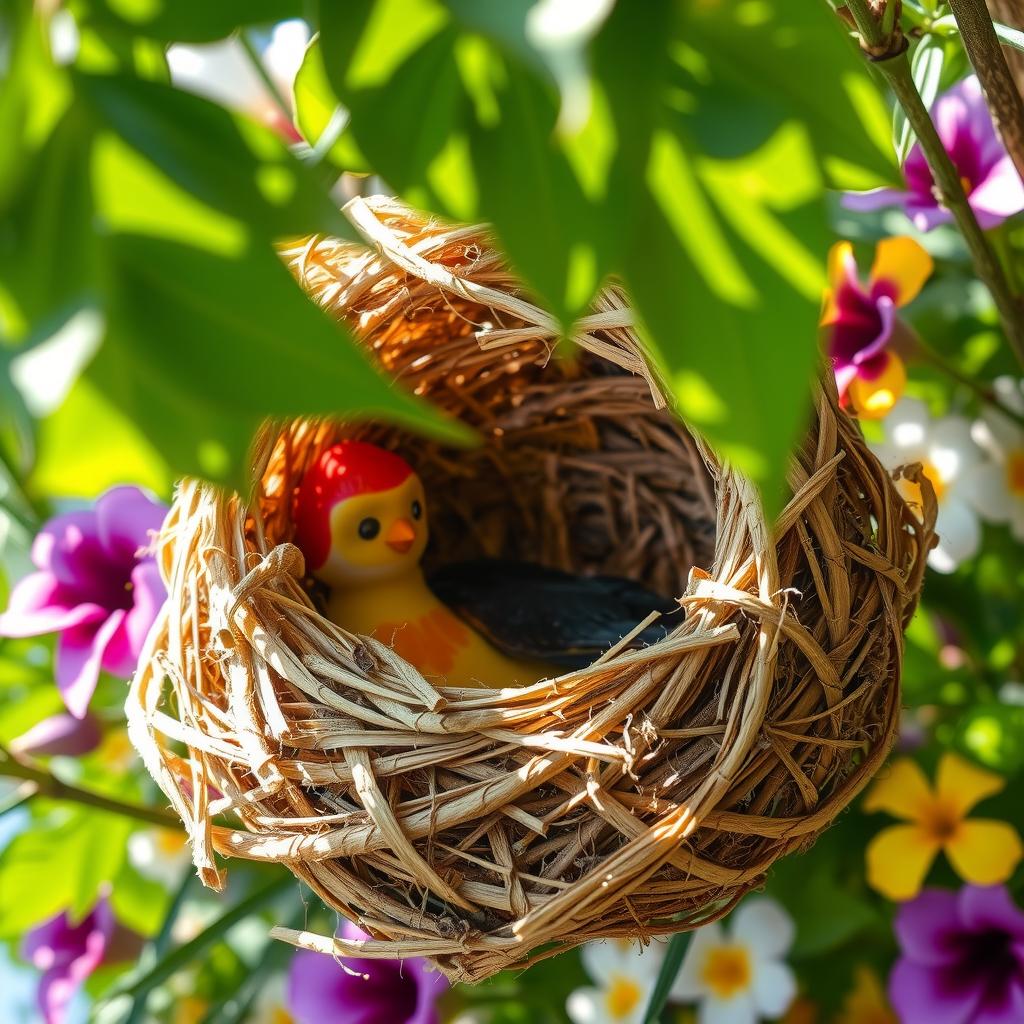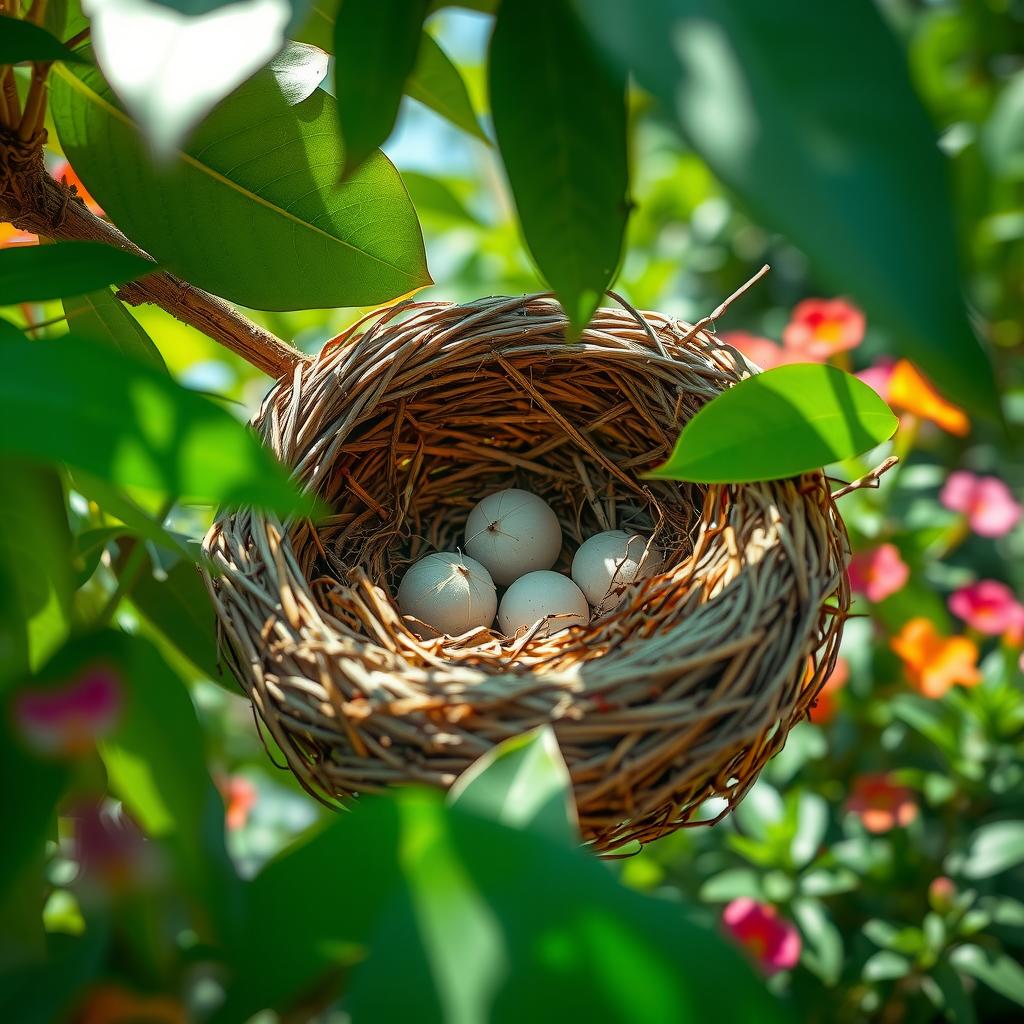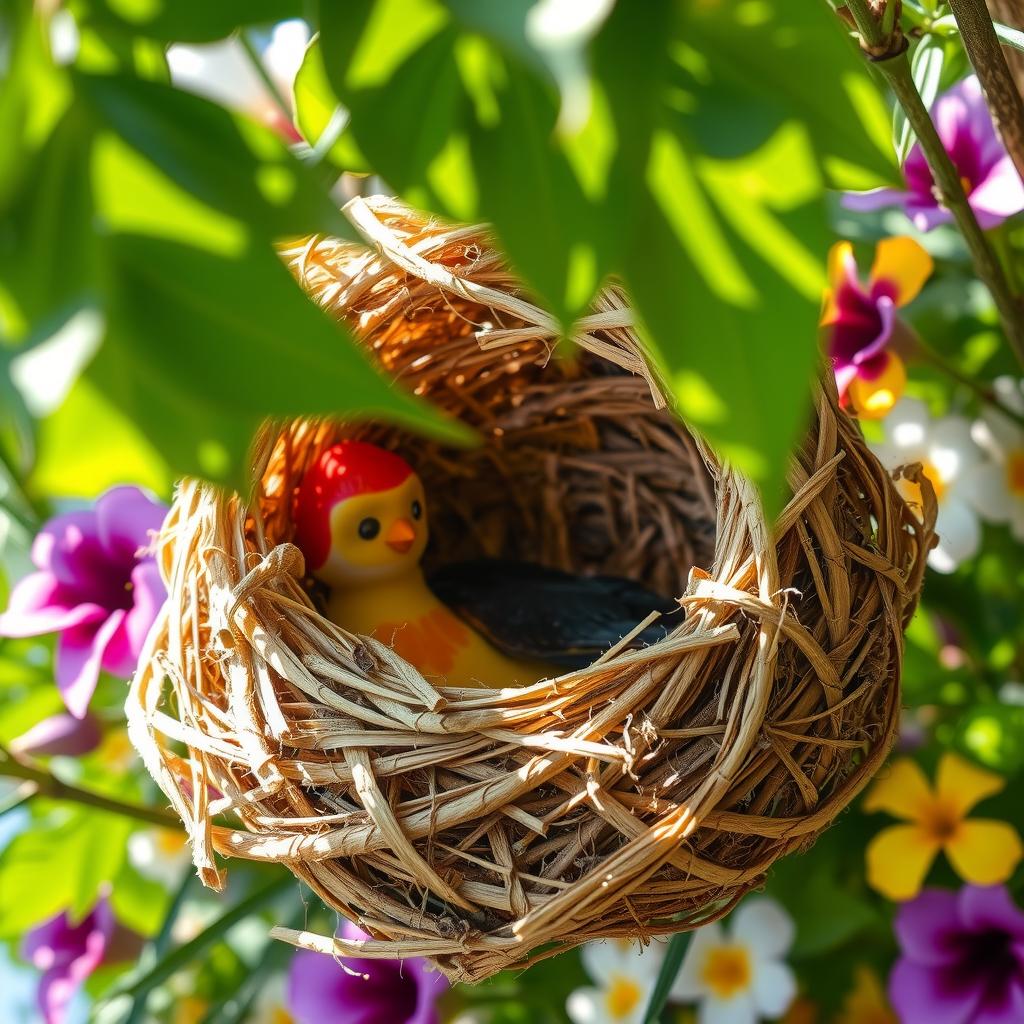In a world increasingly aware of environmental sustainability, the choices made for animal care can hold significant implications for wildlife and domestic pets alike. One pressing concern among pet owners and wildlife enthusiasts is how to provide adequate nesting materials that not only foster healthy living conditions but also align with eco-friendly practices. Enter coconut fiber nesting material, a remarkable solution that caters to both these needs while promoting an enriched habitat for birds and other small animals. This innovative product stands out due to its natural composition derived from the fibrous husks of coconuts, making it an excellent option in the realm of sustainable bedding.
The rising interest in animal bedding alternatives has sparked conversations about what constitutes a truly beneficial nesting environment. Traditional materials often fall short when it comes to biodegradability or may introduce harmful chemicals into habitats, thus compromising wildlife health. In contrast, coconut fiber nesting material offers a safer alternative that is as practical as it is responsible; its biodegradable properties ensure minimal impact on ecosystems once discarded. As more individuals seek ways to reduce their carbon footprint while caring for their feathered friends or cherished pets, this product emerges as a frontrunner in promoting sustainable practices.
Furthermore, using natural fibers like those found in coconut husks enriches the overall quality of bird nesting sites by providing insulation and moisture-wicking benefits—essential factors for nurturing hatchlings during critical developmental stages. The adoption of such eco-friendly habitats serves not only individual interests but also contributes positively towards broader conservation efforts aimed at protecting diverse species within our shared environments.
As discussions around wildlife care continue to evolve, embracing products like coconut fiber nesting material becomes imperative for anyone passionate about fostering thriving ecosystems—be they through backyard birdwatching or creating safe spaces for smaller mammals at home. With insights into sourcing high-quality materials and recognizing their importance in nurturing life cycles, readers can embark on informed journeys toward enhancing animal welfare sustainably while ensuring vibrant homes flourish all around them.

Key points: * Principal insights into the advantages of utilizing coconut fiber nesting material for avian care and habitat enhancement.
The first significant advantage of coconut fiber nesting material is its exceptional ability to create a warm and comfortable environment for birds during their critical nesting periods. This natural substrate provides insulation, which is vital for maintaining optimal temperatures within nests, ensuring that eggs remain viable and chicks are kept cozy. Unlike synthetic alternatives, which can retain heat uncomfortably or degrade over time, coconut fiber offers a sustainable bedding solution that fosters successful breeding outcomes while allowing wildlife to thrive in their habitats.
Another noteworthy benefit lies in the eco-friendliness of coconut fiber nesting material. As society increasingly shifts towards environmentally conscious practices, using such natural fibers reflects a commitment to wildlife preservation. By choosing this eco-friendly habitat option over traditional materials filled with harmful chemicals, pet owners actively contribute to reducing pollution and safeguarding ecosystems. This choice not only supports birds but also promotes healthier living conditions for various small mammals that may share similar nesting needs.
Additionally, the versatility of coconut fiber nesting material makes it an excellent choice across diverse species requiring safe environments during vulnerable life stages. Whether catering to different types of birds or small mammals seeking shelter, this sustainable bedding adapts effortlessly to varied habitats. The use of these natural fibers encourages responsible consumption patterns among users who recognize the importance of contributing positively towards biodiversity conservation efforts while ensuring their pets enjoy secure surroundings free from synthetic hazards.
In summary, opting for coconut fiber nesting material enriches both animal lives and ecosystems alike by providing essential support for bird nesting practices while promoting broader ecological balance through sustainable choices in wildlife care.

Introduction: The Importance of Eco-Friendly Solutions
Understanding the Role of Sustainable Materials in Wildlife Care
The increasing awareness surrounding environmental sustainability has led to a significant shift towards the adoption of eco-friendly solutions in various fields, including wildlife care. As habitats become increasingly threatened by human activity, the importance of sustainable materials is paramount. One such material that has gained prominence is coconut fiber nesting material, which serves as an excellent example of how natural fibers can contribute positively to both animal welfare and ecosystem health. By utilizing coconut fiber for bird nesting and other forms of animal bedding, wildlife caregivers can create supportive environments that mimic natural conditions while reducing their ecological footprints.
The impact on ecosystems is profound when organizations prioritize sustainable bedding options like coconut fiber nesting material. This organic product not only provides a safe and comfortable habitat for numerous species but also promotes biodiversity by encouraging birds to nest in areas where they might otherwise feel insecure or threatened due to synthetic alternatives. Moreover, these natural fibers decompose easily, minimizing waste accumulation in landfills and contributing nutrients back into the soil—a critical factor for maintaining healthy ecosystems.
Incorporating eco-friendly solutions extends beyond merely selecting appropriate materials; it fosters a holistic approach toward wildlife care that prioritizes long-term ecological health over short-term convenience. For instance, using coconut fiber nesting material reduces reliance on synthetic products that may contain harmful chemicals detrimental not just to animals but also to humans who interact with these environments daily. Furthermore, such practices promote public awareness about sustainable living strategies—encouraging individuals and organizations alike to consider their roles within larger environmental contexts.
As communities strive for more extensive conservation efforts, adopting innovative solutions like coconut fiber nesting material becomes essential for supporting endangered species while simultaneously fostering educational opportunities around sustainability practices among local populations. These initiatives demonstrate how responsible choices regarding animal bedding can resonate far beyond individual habitats; they serve as powerful testimonials urging collective action against broader environmental challenges.
Ultimately, embracing sustainable materials such as coconut fiber nesting material strengthens connections between wildlife care providers and nature itself—enhancing understanding of interdependence among different organisms within ecosystems while facilitating healthier interactions between people and animals alike. Through thoughtful integration into everyday practices focused on nurturing life rather than exploiting resources indiscriminately, society stands poised at an important crossroads where compassion meets responsibility—a pivotal moment capable of reshaping future landscapes both literally and metaphorically through innovative thinking rooted firmly within ecologically sound principles.
Coconut Fiber Nesting Material: A Game-Changer for Birds
Discover the Benefits of This Eco-Friendly Bedding Solution
In the realm of wildlife care, coconut fiber nesting material emerges as a revolutionary choice for enhancing bird habitats. Derived from the husk of coconuts, this natural bedding solution offers several unique properties that cater specifically to the needs of nesting birds. Its coarse texture provides excellent insulation, ensuring that eggs remain at a stable temperature throughout varying weather conditions. Furthermore, coconut fiber is highly absorbent and can effectively manage moisture levels within nests, reducing the risk of mold and bacteria that can be detrimental to both eggs and fledglings.
The sustainability factor cannot be overlooked either; utilizing coconut fiber contributes to an eco-friendly habitat by repurposing agricultural waste into valuable nesting material. Unlike synthetic options which may leach harmful chemicals into the environment, this biodegradable alternative ensures a safe space for wildlife while promoting healthier ecosystems. By incorporating natural fibers like coconut into their nests, birds also benefit from an enhanced level of comfort during incubation periods.
Moreover, research indicates that many avian species are more likely to choose areas with abundant nesting materials, leading them to thrive in environments where such resources are available. The introduction of coconut fiber nesting material not only supports bird populations but also encourages biodiversity in local ecosystems by attracting various species seeking suitable places for reproduction.
For those involved in wildlife care or backyard birdwatching enthusiasts looking to provide support for local avian communities, investing in sustainable bedding solutions like coconut fiber is essential. It addresses multiple aspects—comfort and safety—for our feathered friends while fostering an ecological balance crucial for sustaining wildlife habitats over time. Thus, opting for coconut-based products is not merely a trend; it’s a commitment towards nurturing nature sustainably through informed choices in animal bedding solutions.
Mindful Consumption and Wildlife Preservation
Embracing Eco-Friendly Materials for a Sustainable Future
In an era where environmental consciousness is paramount, the choice of habitat materials plays a crucial role in wildlife preservation. Adopting coconut fiber nesting material as a sustainable option not only benefits various species but also reflects mindful consumption practices that resonate with ecological ethics. This natural fiber, derived from the husk of coconuts, offers exceptional insulation and durability, making it an ideal component for bird nesting and animal bedding. The ecological benefits are profound; using eco-friendly habitat materials like coconut fiber significantly reduces reliance on synthetic products that contribute to pollution and habitat destruction. Furthermore, these choices promote biodiversity by providing safe environments for birds to nest—encouraging their populations to thrive while simultaneously fostering a connection between human activity and nature’s intricate web of life.
The Impact of Natural Fibers on Wildlife Nesting Habits
The impact of utilizing coconut fiber extends beyond mere aesthetics; it directly influences wildlife behavior and breeding success rates. Birds innately seek out suitable nesting materials that offer warmth and protection against predators. By integrating sustainable options such as coconut fiber nesting material, caretakers can create safer habitats conducive to healthy breeding cycles for various avian species. According to studies conducted by wildlife conservationists, nests made from natural fibers provide superior moisture control compared to synthetic alternatives—an essential factor during rainy seasons when nests can become inundated with water or compromised by mold growth. This advancement not only aids in the survival rates of hatchlings but also contributes positively toward maintaining stable bird populations in diverse ecosystems.
Supporting Biodiversity Through Sustainable Choices
Choosing eco-friendly habitat solutions goes beyond individual actions—it supports broader biodiversity initiatives aimed at preserving endangered species across different regions worldwide. Utilizing sustainable bedding like coconut fibers promotes responsible sourcing practices that ensure minimal disruption to local ecosystems while providing essential resources for animals requiring shelter during critical life stages such as gestation or rearing young ones. Moreover, this approach encourages community involvement in wildlife care efforts through workshops focused on educating people about sustainable living practices linked with effective conservation strategies involving native flora found within their habitats—a synergistic relationship reinforcing positive outcomes both ecologically and socially.
Building Awareness Around Responsible Consumption Practices
Raising awareness about the importance of conscious consumerism is vital in today’s society where choices often have far-reaching consequences on our planet’s health—and its inhabitants’. By promoting the use of natural fibers like coconut fiber, individuals can be partakers rather than spectators regarding environmental stewardship activities within their communities or personal lifestyles alike! Educational campaigns highlighting how seemingly small decisions can lead towards larger impacts are crucial; they foster collective action geared towards reducing waste associated with non-biodegradable goods while encouraging thoughtful purchases aligned with sustainability goals aimed specifically at protecting vulnerable populations among fauna residing close to urban areas affected adversely due development encroachment into wildlands previously untouched priorly.
Cultivating A Culture That Values Environmental Responsibility
To truly embrace the ideals behind mindful consumption requires more than just purchasing habits—it necessitates cultivating a culture rooted firmly around caring deeply about one’s surroundings including all creatures sharing this planet alongside humans themselves! When individuals opt for products such as coconut fiber nesting material, they signal support towards industries prioritizing ethical production methods which ultimately lead us closer together collectively forging pathways bridging gaps existing between nature versus humanity’s relentless expansion over time throughout history until present day events unfold surrounding climate change challenges presently faced globally across continents everywhere every second ticking away marks another opportunity lost if left unaddressed further still needing proactive measures taken now instead delaying future progress indefinitely risking irreversible damage done already affecting countless lives daily unnoticed perhaps overlooked otherwise sadly forgotten amidst chaos ensuing daily lives continuing forward blindly ignoring signs posted along way urging mindfulness necessary desperately needed transitioning swiftly into new age responsibly managing resources equitably ensuring longevity shared existence harmoniously coexisting peacefully side-by-side thriving collaboratively hand-in-hand moving onward upward striving brighter tomorrow ahead filled hope dream harmony achieved sustainably continually flourishing endlessly enduring forevermore united whole interconnected resilient world built upon foundations laid strong unwavering tenacious determination cultivate nurture cherish uphold value protect preserve sanctity existence itself preserved eternally cherished timeless remembering roots planted deep grounded solid earth beneath feet standing tall steadfast unwavering supporting each other uplifting spirit resilience echoing love reverberating hearts beating synchronously resonantly harmoniously entwined always inevitably intertwined woven fabric tapestry life woven gradually intricately beautifully gracefully together creating masterpiece breathtaking awe inspiring magnificent rememberable momentous journeys undertaken discovering wonders exploring marvels unlocking mysteries unveiling secrets never cease amaze inspire enlighten uplift encourage motivate spark ignite flames passion driven purpose fueled vision bright illuminating paths trodden adventure awaits beckoning calling forth souls wanderlust yearning explore find meaning significance unravel hidden treasures buried depths oceans vast endless skies horizons expansive possibilities limitless awaiting discovery journey embarked upon relentlessly seeking truth wisdom enlightenment peace harmony balance tranquility serenity joy happiness fulfillment bliss contentment satisfaction gratitude celebration unity diversity richness experiences shared connections forged lasting impressions imprint memories etched eternity boundless infinite expanse ever expanding universe unfolding miracles everyday
Coconut fiber nesting material has garnered attention for its significant benefits in the realm of wildlife care and sustainable bedding solutions. This natural substrate is derived from the husk of coconuts, making it both an eco-friendly alternative to synthetic fibers and a practical choice for bird nesting. One of the primary advantages of using coconut fiber nesting material lies in its ability to provide warmth and comfort, essential factors that contribute positively to successful breeding among various avian species. As birds prepare their nests, they seek safe environments that not only support their offspring but also facilitate healthy development during vulnerable life stages.
Another noteworthy aspect of coconut fiber nesting material is its biodegradable nature. Unlike traditional synthetic options that can take years to decompose, this natural bedding breaks down over time without releasing harmful chemicals into the environment. By choosing eco-friendly habitat materials like coconut fibers, pet owners actively participate in promoting wildlife preservation efforts while ensuring their feathered friends are surrounded by safe and nurturing conditions free from toxic substances often found in conventional animal bedding products.
The versatility of coconut fiber nesting material extends beyond birds; it serves as an excellent option for small mammals as well. Various species benefit from secure environments created with these natural fibers during critical phases such as breeding or recovery periods after illness or injury. The adoption of sustainable practices centered around using coconut-based products fosters healthier animal lives while simultaneously contributing to broader ecological benefits—an important consideration in today’s world where sustainability is paramount.
FAQ:
Q: What makes coconut fiber nesting material a good choice for bird housing?
A: Coconut fiber nesting material provides warmth, comfort, and security essential for successful breeding among birds while being environmentally friendly.
Q: Is coconut fiber biodegradable?
A: Yes, unlike synthetic materials which can be harmful to wildlife and slow to decompose, coconut fiber breaks down naturally without releasing toxins into the environment.
Q: Can I use coconut fiber nesting material for animals other than birds?
A: Absolutely! Coconut fiber is versatile enough to serve as suitable bedding for various small mammals needing secure environments during vulnerable stages such as breeding or recovery.

